(Group) Review the safety data sheets for each of your molding and casting materials
(Individual) Design a mold around the stock and tooling that you'll be using
Mill it and use it to cast parts.
This week, since we were designing molds, I wanted to learn more about sculpting using 3D CAD tools, specifically Fusion360 since this was the software I was using previously. I learned about the mesh functions and creating form. It's a really nifty tool to be able to deform and edit forms easily. The main limitation was my own artistic skill. In order to create more detail with the model, I had to really subdivide existing meshes and add edges in order to get fine detail. Furthermore, each time I added edges in one part of the model, it would unexpectedly deform another part of the model by pulling it in a somewhat sporadic direction.
Overall, I created a simple bear head:
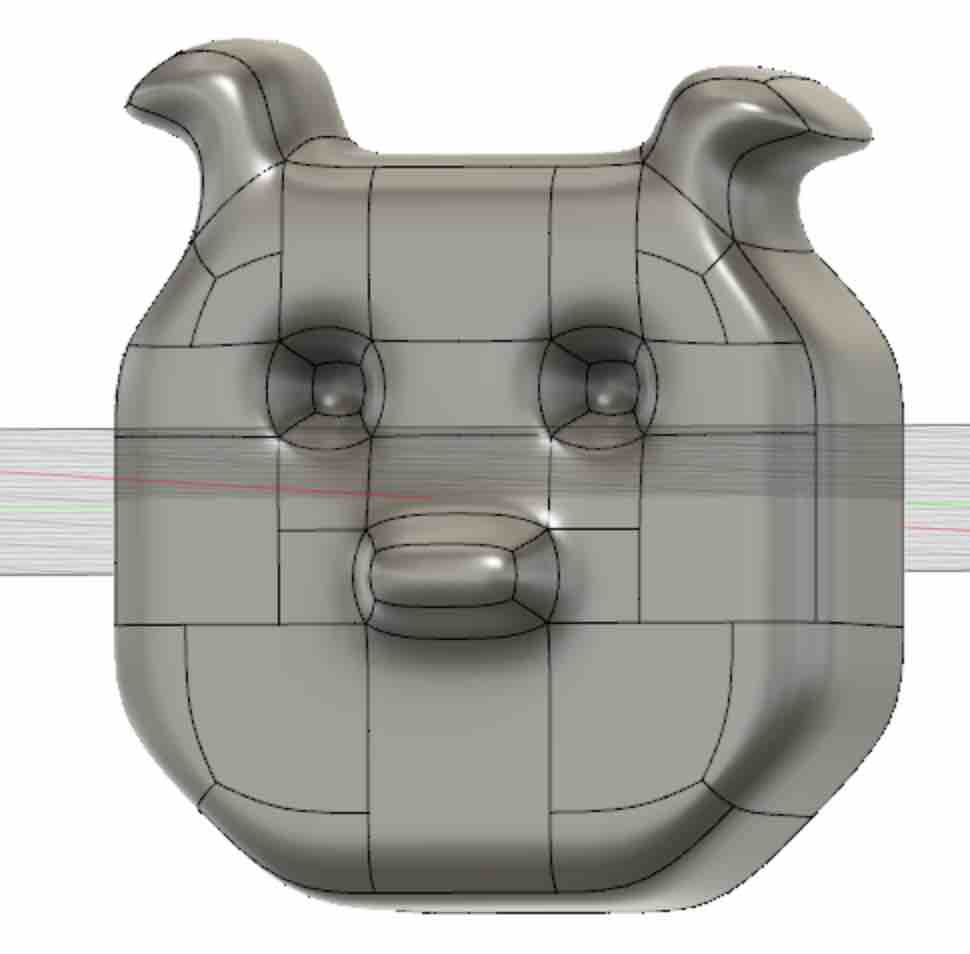
Next, John and I began working on the toolpath using the Vectric Cut3D software. Using a 0.125" ball end mill (I chose this part because my bear didn't need to press fit into anything, i.e. there was no functionality besides aesthetic, so I prioritized using a end mill that is able to smooth out better and grab fine geometry better).
Shown below is (in order) the bear in a 3.5 x 2 x 1.5" block, the roughing toolpath, and the finishing toolpath:
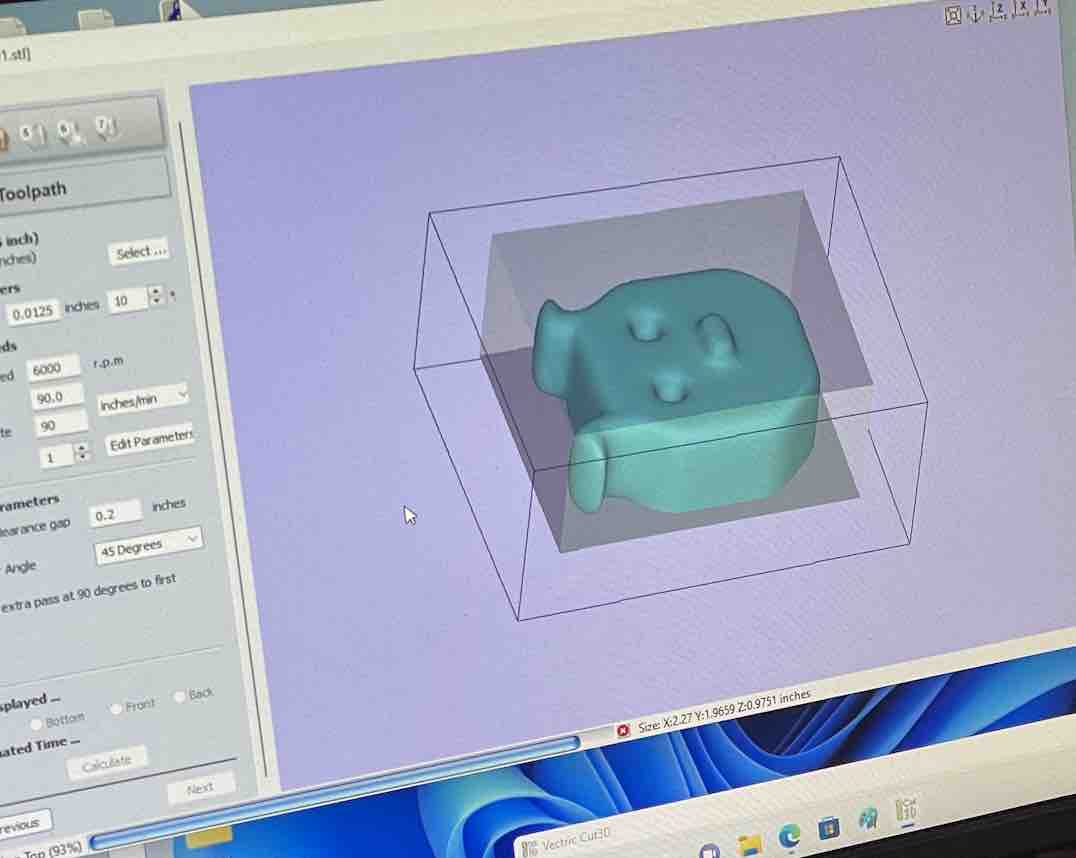

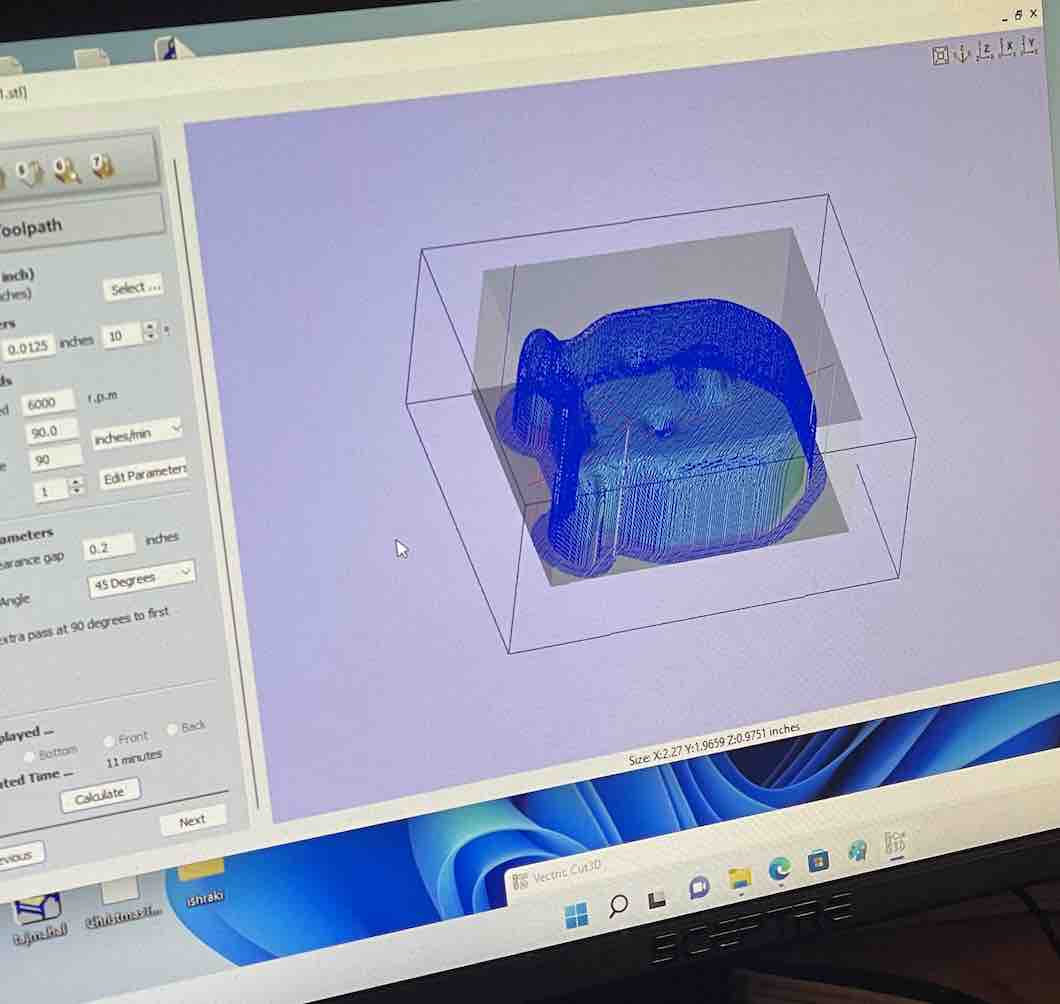
Below is part of the roughing toolpath simulation:
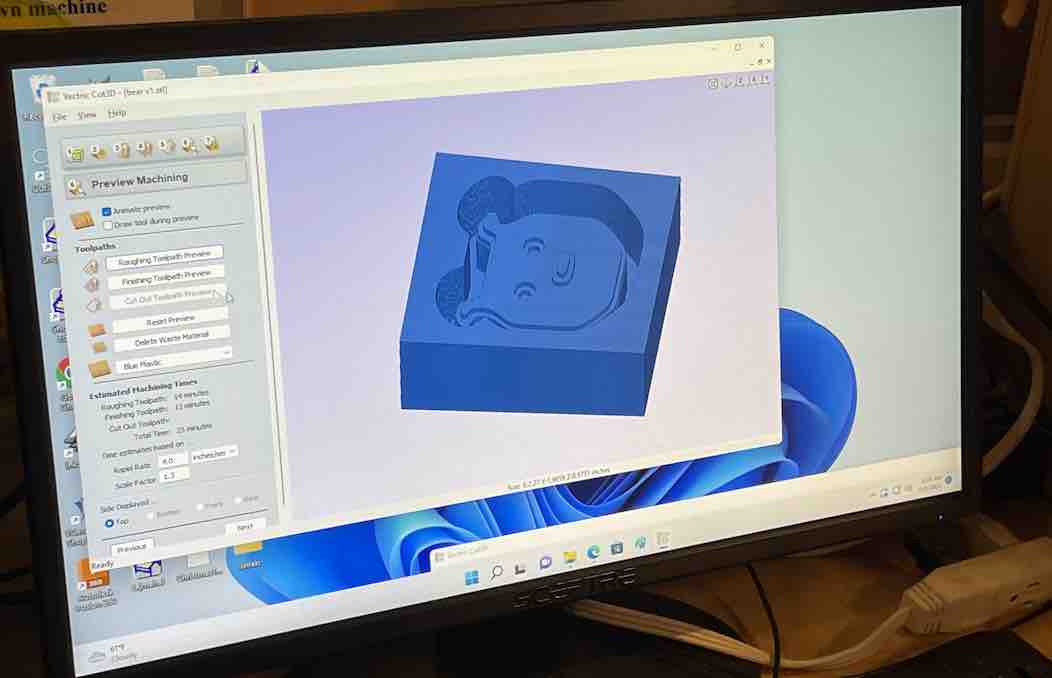
Below is part of the finishing toolpath simulation:
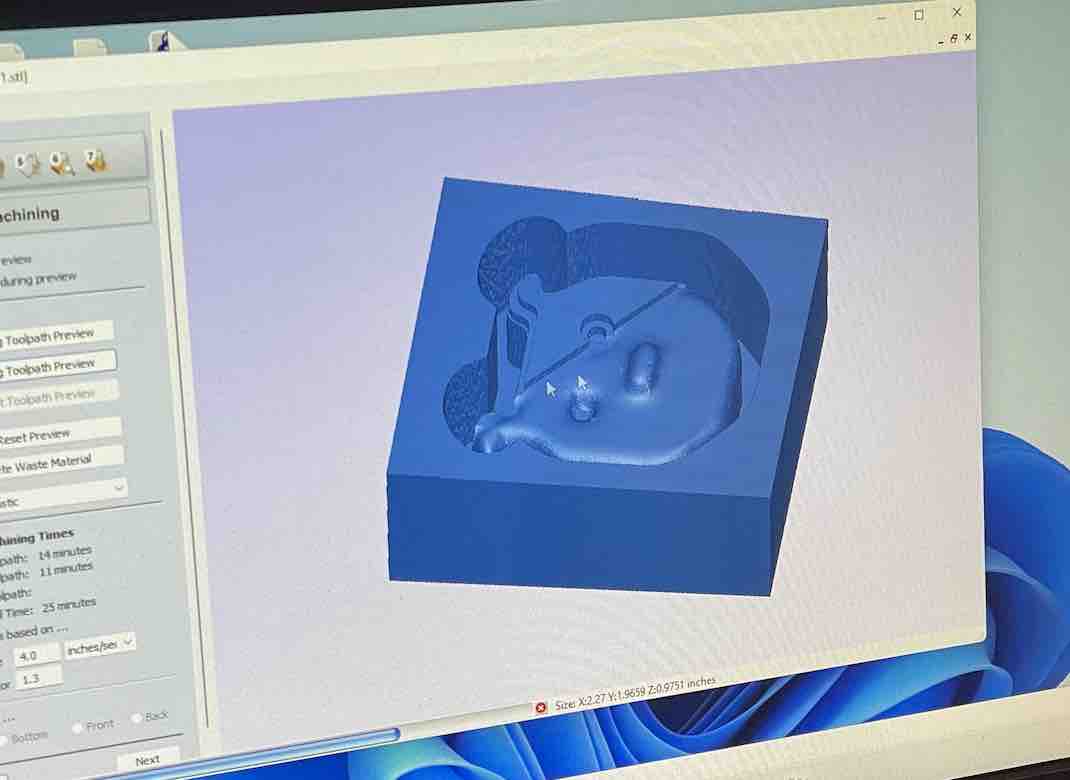
I then secured the wax piece using hot glue to a piece of OSB, and John helped me drill the piece onto the sacrificial layer of the 3 axis milling machine. We calibrated the X, Y, Z axes and then began with the cutting process, which took around 50 minutes.
Lots of wax shavings accumulated during the cutting process:
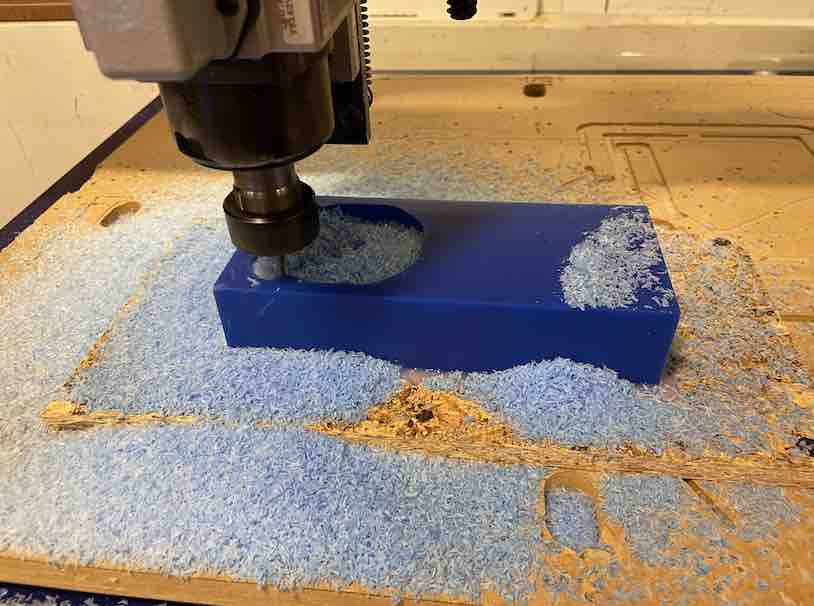
Shown below is the milled wax piece:
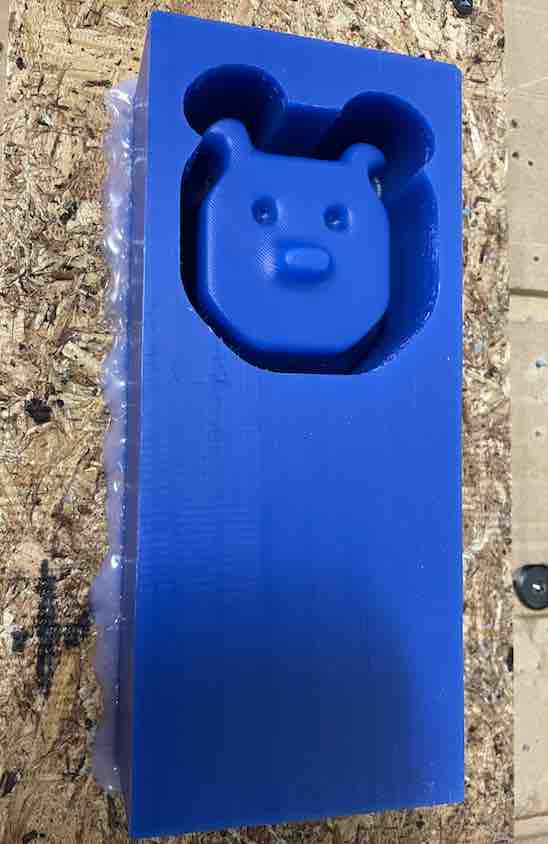
The next step was using the sculpted wax to cost a mold using Oomoo. This process involved taking a 1:1 ratio (by volume) of parts A and B of the Oomoo, then mixing before using for 3 minutes. The total pot life was 15 minutes which meant that casting needed to be done relatively quickly.
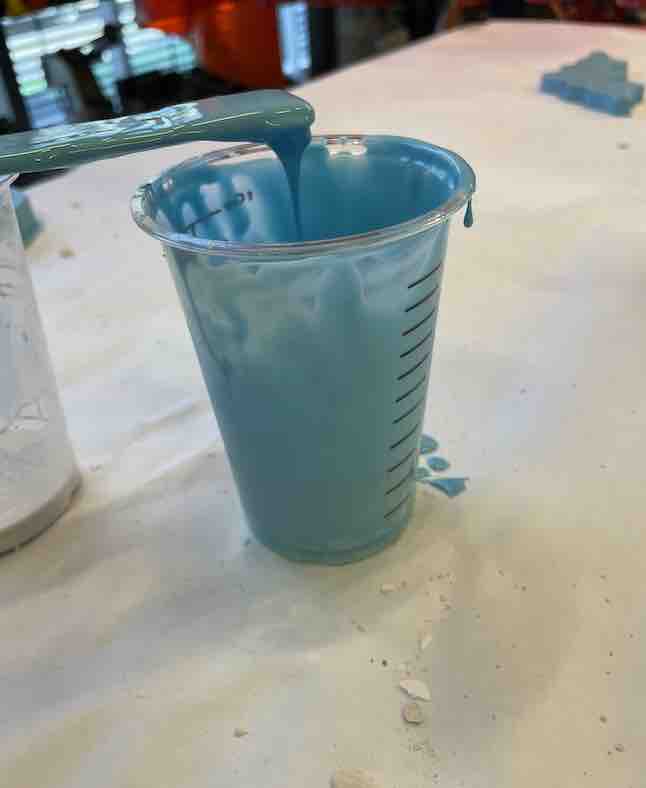
In order to get out any undesirable air pockets and bubbles, I lightly tapped the wax and mold to manually "de-gas".
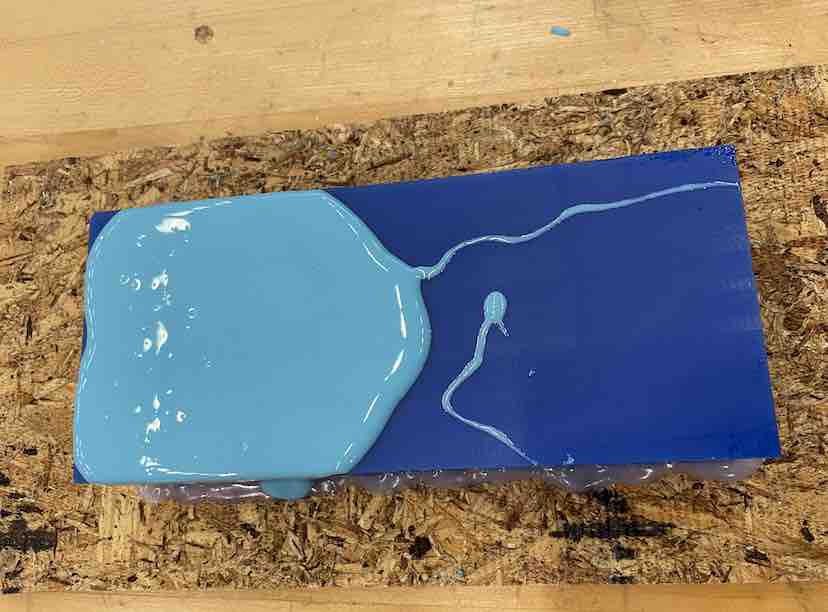
This was the Ooomoo mold -- it took around 1 hour and 30 minutes to be able to pop out.
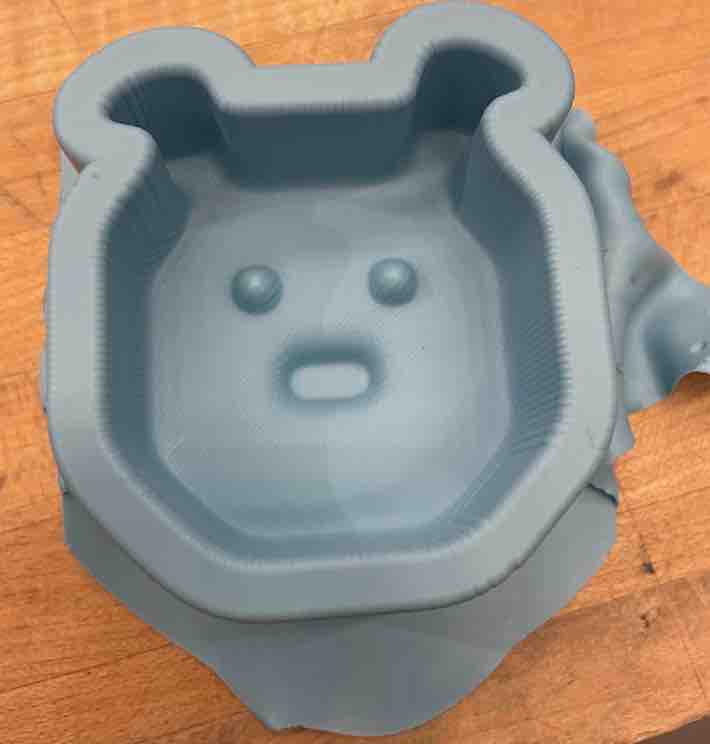
The next step was to use this new Oomoo silicone mold to then create a drystone piece. This process involved taking a 18-20 H20: 100 powder ratio (by weight). I decided to use the electric scale instead of "the island method" (we were taught both methods during our casting training) since I was more confident with this approach.
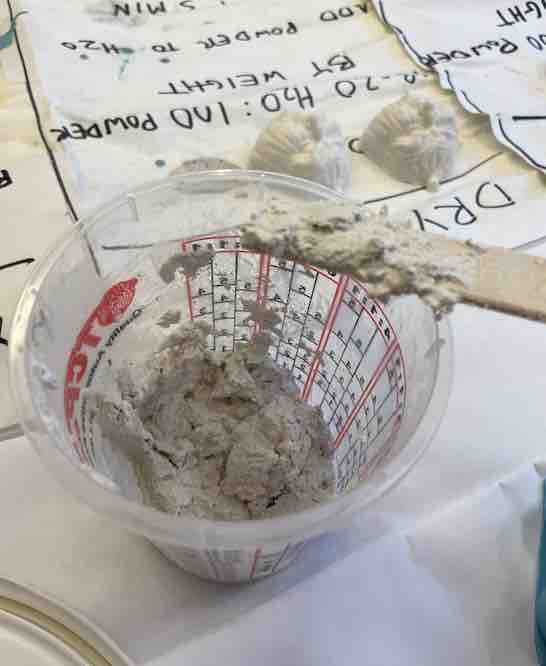
I added the powder to the H20, waited 1-3 minutes, and then mixed for an additional 2-4 minutes.

This was the drystone piece -- it took around 30 minutes to be able to pop out.
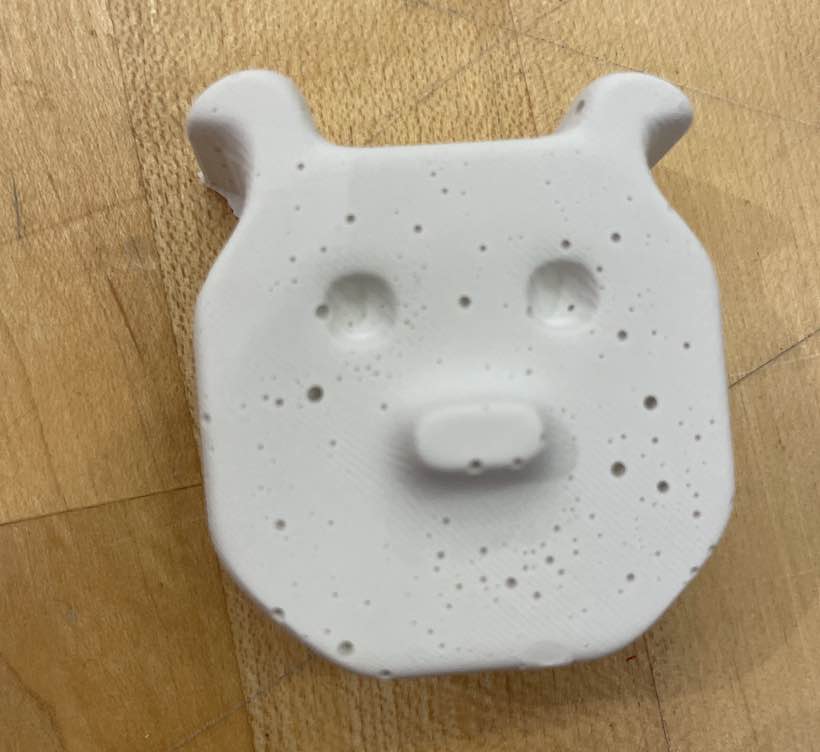
I forgot to tap out the air bubbles so there's lots of gas trapped at the bottom of the mold -- next time, I will be more mindful of this.